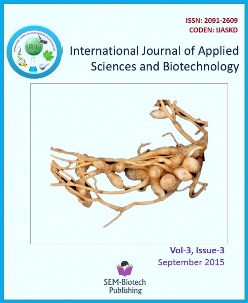Study on Effect of Supplementary Irrigation on Rainfed Chickpea (Cicer arietinum L.)
DOI:
https://doi.org/10.3126/ijasbt.v3i3.12922Keywords:
Chickpea, supplementary irrigation, vegetative stage, grain yieldAbstract
Chickpea is one of the important winter legumes in Nepal. It is grown after rice or maize either as sole or mixed crop. In Nepal, chickpea is mostly grown as rainfed crop on residual soil moisture or sometimes under irrigation. Lack of irrigation results drought and heat stress which affects crop growth and development. Irrigation at proper time is one of the most important factors for achieving higher crop yield. The experiment regarding use of supplementary irrigation time on chickpea was carried out at Regional Agricultural Research Station, Khajura, Banke, Nepal during the winter season of the year 2011 and 2012. The experiment was laid out in Randomized Complete Block Design with three replications. Seven different time intervals of irrigation was applied in the experiment for both years. Treatments differed significantly in terms of grain yield but showed non -significant difference in days to flowering and maturity over the years. The combined analysis of the experiments showed that the highest grain yield (2318 kg/ha) was produced when irrigation was supplied at vegetative stage followed by irrigation supplied at flowering stage (2298 kg/ha) and pod fill stage (2104 kg/ha) respectively.
Int J Appl Sci Biotechnol, Vol 3(3): 431-433




